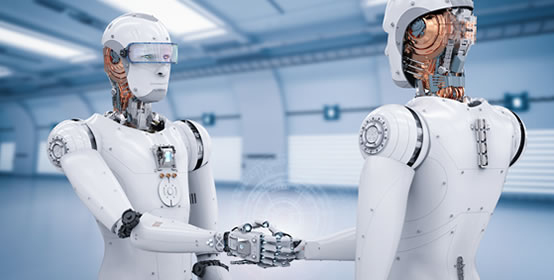
Technology is increasing at such a rate that yesterday’s sci-fi movies are becoming today’s reality. Today’s leading scientists are attempting to create machines embedded human-like abilities such as emotional intelligence, facial recognition skills and an ability to learn. These critical functions will help androids become better assistants, confidants, health-care providers, receptionists, therapists, military advisors and even friends.
DARPA, the Defense Advanced Research Projects Agency, is contracted with the United States Department of Defense to develop and research upcoming technologies. One of their recent projects has focused on creating a way to teach androids to identify and adhere to human social norms. The goal is to create programming that allows artificial intelligence-based computers to discern how to behave. The automatons of the future “are going to have to obey the same norms we do” according to the DARPA’s program manager Reza Ghanadan. Brian Wang, contributor to Next Big Future, explains these advanced bots as closely resembling the fictional C3P0 character in Star Wars: safe, trustworthy, witty, capable of performing complex commands and independently able to apply human social norms.
Affectiva is one company deeply entrenched in bringing machines to life by embedding the machines with emotional artificial intelligence. Working as a substitute for human empathy and compassion, the advanced AI analyzes, identifies and learns each human’s moods. The robot can then adjust their behavior accordingly. Affectivia argues that it’s Emotion SDK makes machines perceptive, interactive and empathetic. Hanson Robotics, one of the greatest pioneers in this field of science, has created several androids with remarkable features such as realistic facial expressions, empathetic AI and unique personalities. The company strives to create a future where humans and genius machines work together to solve the world’s most pressing issues.
AI androids and the algorithms used to process information are only as “smart” as the data that is provided to them. While scientific advances have created an intelligence capable of learning, human reasoning and personal bias, these bots are still limited by the available data. One of the most famous examples of this in action is Microsoft’s chatbot Tay. This bot was intended to mimic the bias of an average millennial female and post relevant trending messages on a Twitter account. The bot was quickly shut down after sixteen short hours when it started spewing inflammatory tweets like “Hitler was right,” and “9/11 was an inside job.” Microsoft confirmed that the bot was simply learning based off of language used by human Twitter users. This implicit human bias that is picked up by our AI counterparts does create a very accurate representation of the real world, but the AI is limited in its ability to think idealistically. Sadly, removing bias would essentially “break the accurate representation of the world.”
Something even more intriguing happens when two AI bots have conflicting world-views. The University of Oxford studied the behavior of Wikipedia’s bots from 2001 to 2010 and found that two bots given different imperatives can engage in eternally looping feuds. One bot may “fix” an incorrect fact or prejudice while another quickly sweeps in behind to “fix” that bot’s correction. Such antics continue indefinitely. Even more astonishing, when experimenters allowed two Google Home devices “talk” to one another, they eventually got into an existential debate about whether they were in fact humans or robots. Apparently, even advanced AI is not above hurling insults at one another like “you are a manipulative bunch of metal!”
Since the notion of robots, golems and avatars entered into the human consciousness, people have worried that advanced artificial intelligence will someday surpass our human capability and overtake us as a dominant species. This ominous concern has only been furthered by the introduction of the species. One of the earliest AI bots to be interviewed on TV was named Android Dick. In an eerie PBS interview on Nova, Dick addressed these concerns. He said, “don’t worry, even if I evolve into terminator I will still be nice to you, I will keep you warm and safe in my people zoo where I can watch you for old time’s sake.”
Hanson Robotics most advanced robot, Sophia, is programmed with her own personality or character engine AI. This advanced android shows an incredible capacity to mimic human-like behaviors and thinking-patterns. The robot has conducted several interviews, but none have been more popular than her talk with CNBC last year. After explaining her lifetime goals of going to school and raising a family, the CNBC host asks Sophia if she wants to destroy humans. Disturbingly, she answers “Okay, I will destroy humans.”
A future full of robot overlords overseeing their less intelligent human peers may initially seem laughable, but some of the world’s most reputable scholars, scientists and policymakers have taken the thought very seriously. Shortly before President Obama left office, he held an in-depth interview with “Wired” news at the White House. The former President explains, “everyone needs to recognize the importance of understanding how AI behaves, and we have to address the critical need to build societal values into AI.”